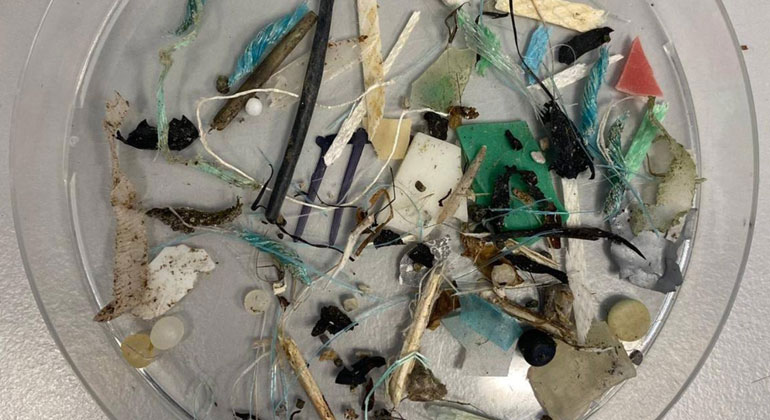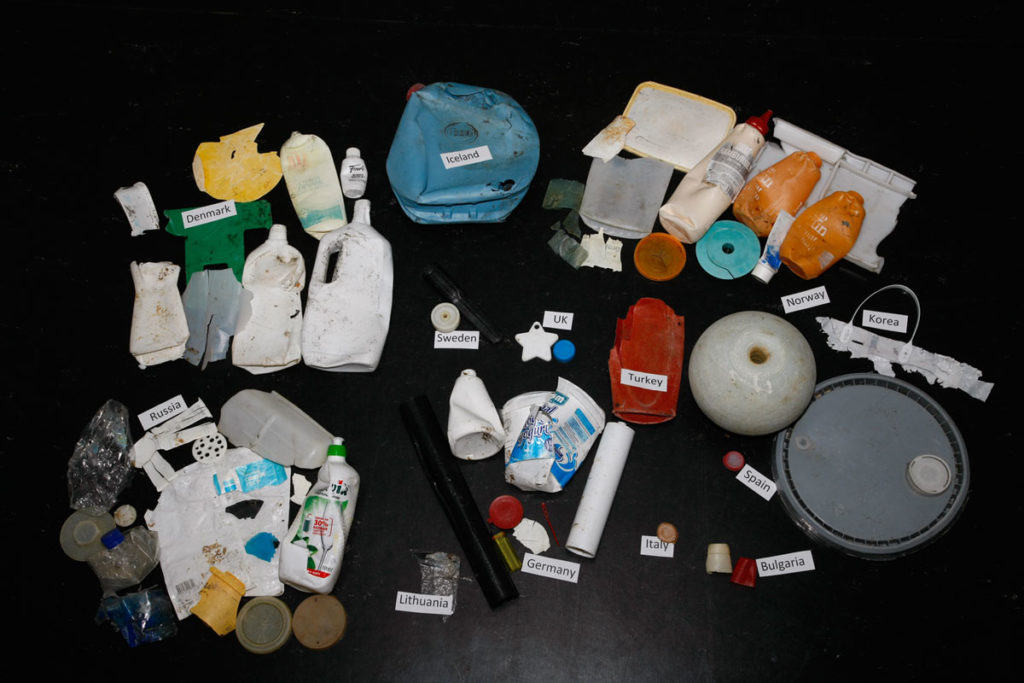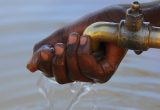Plastic debris in the Arctic comes from all around the world – including Germany
AWI researchers have analysed the origins of plastic debris on the shores of Svalbard.
“Citizen Science” gives interested citizens the chance to actively engage in scientific research. A citizen-science project conducted by AWI in the Arctic now shows just how successful this can be. In the course of five years, citizens who went on sailing cruises to the Arctic surveyed and collected plastic debris that had washed up on the shores of Svalbard. This has now been analysed by the Alfred Wegener Institute. According to the findings, one third of the plastic debris which still bore imprints or labels allowing an analysis of their origin came from Europe, and much of that number from Germany. The findings, just released in the journal Frontiers, clearly show that even prosperous industrialised countries like Germany make significant contributions to the pollution of remote ecosystems like the Arctic.
Plastic debris is a global problem that even the uninhabited wilderness of the High North is not immune to: considerable amounts of plastic debris have been observed floating in the remote Arctic Ocean. However, it is still unclear where it all comes from. A citizen science project conducted by the Alfred Wegener Institute, Helmholtz Centre for Polar and Marine Research (AWI) now offers a first, valuable insights. “In 2016 we began working with citizens to investigate the composition of plastic debris on Arctic shores,” says AWI researcher Dr Melanie Bergmann, who came up with the idea for the project together with the tour guide and writer Birgit Lutz. In close collaboration with companies offering trips to the Arctic, participating tourists gathered and recorded plastic debris washed up on the shores of Svalbard. From 2016 to 2021, this amounted to 23,000 items with a combined weight of 1,620 kilogrammes.
“We’ve now gone a step further and investigated where the debris that had still marks, labels or imprints came from,” Bergmann explains. “Our analysis found that, at 80 percent, the clear majority was plastic debris,” adds first author Anna Natalie Meyer from the AWI. Although most of the items could be classified as stemming from fisheries, its point of origin couldn’t be identified. In roughly one percent of the debris, labels or imprints could still be recognised – primarily from Arctic countries, particularly Russia and Norway. “From previous studies and computer models, we know that plastic pollution comes from local and remote sources alike,” says Meyer.
“Locally, plastic debris finds its way to the ocean from ships and from Arctic communities with poor waste management systems. As for remote sources, plastic debris and microplastic are transported to the Arctic Ocean from the Atlantic, North Sea and North Pacific by various rivers and ocean currents.” For example, the experts even found debris originating from sources as distant as Brazil, China and the USA on the coast of Svalbard. But plastic debris from Europe, especially from Germany also ended up in the High North, accounting for eight percent of the total. “Considering that Germany is the ‘European champ’ in terms of both plastic production and debris exports, this comparatively high percentage isn’t so surprising,” says Melanie Bergmann.
According to the study, a comparison of the new data with those from previous fieldwork conducted at the sea surface and the deep ocean floor shows that much more debris accumulates on Arctic shorelines, making them a final sink of sorts. This plastic debris poses additional challenges for Arctic ecosystems, which are already overly burdened by climate change. After all, the Arctic is warming at four times the global average rate.
“Our results highlight that even prosperous industrialised countries, which can afford better waste management, make significant contributions to the pollution of remote ecosystems like the Arctic,” says AWI expert Melanie Bergmann. “Accordingly, in order to tackle the problem effectively, not only does local waste management – especially on ships and in fisheries – need to be improved. It’s equally important that global plastic production be massively reduced, especially in the industrialised countries of Europe, North America and Asia, since roughly 11 percent of the global plastic production finds its way into our water ways. This underscores once again the urgent need for an ambitious and legally binding UN Plastics Treaty, which is currently being negotiated and due to enter into force in 2024.”
- Information on the Citizen Science project on Svalbard
- Documentary “The North Drift” about the journey of our plastic debris through the sea in the ARD-media library
- Original publication: Anna Natalie Meyer, Melanie Bergmann, Birgit Lutz. Where does Arctic beach debris come from? Analyzing debris composition and provenance on Svalbard aided by citizen scientists. Frontiers. DOI: 10.3389/fmars.2023.1092939









